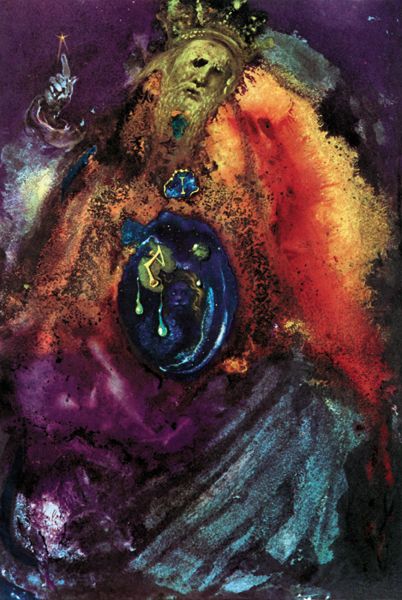Image Details

From Salvador Dali, Biblia Sacra/© 2000 Artists Rights Society (ARS), New York
Vanitas prevails in Salvador Dali’s illustration of Qoheleth (the Preacher), the purported author of Ecclesiastes. The portrait from the artist’s 1969 illuminated Bible faces the opening lines of Ecclesiastes: “The words of Qoheleth, the son of David, king in Jerusalem: Vanity of vanities, says the Teacher, vanity of vanities! All is vanity. What do people gain from all the toil at which they toil under the sun?” (1:1–3).
Author Karel van der Toorn explores the startling similarities between the biblical Book of Ecclesiastes and the Mesopotamian Epic of Gilgamesh. Both texts stress the meaninglessness of life in light of the inevitability of death and admonish their audiences to make the most of the present: “Let your belly be full let your wife enjoy your repeated embrace,” a tavern keeper tells Gilgamesh. Ecclesiastes 9:7–9 offers similar advice: “Go, eat your bread with enjoyment Enjoy life with the wife whom you love.”
But, asks van der Toorn, how did the skeptical, even hedonistic Book of Ecclesiastes, authored by a savvy Jerusalemite in the second half of the third century B.C.E., come to resemble the Mesopotamian masterpiece of Gilgamesh, fragments of which date from the beginning of the second millennium B.C.E.?
